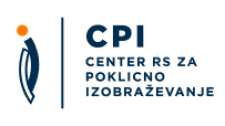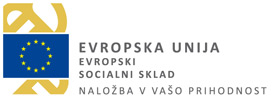Magister oblikovanja vizualnih komunikacij/magistrica oblikovanja vizualnih komunikacij
Selected qualifications
| Name of qualification | Name of qualification: Magister oblikovanja vizualnih komunikacij/magistrica oblikovanja vizualnih komunikacijAdd to comparison |
|---|---|
| Translated title (no legal status) | Translated title: Master of Arts in visual communications design |
| Type of qualification | Type of qualification: Master’s degree |
| Category of qualification | Category of qualification: Educational Qualification |
| Type of education | Type of education: Master's education |
| Duration |
Duration of education:
2 years
|
| Credits | Credits: 120 credits |
| Admission requirements |
Entry conditions:
|
| ISCED field |
Field:
Arts and humanities
|
| ISCED subfield | subfield: fine arts |
| Qualification level |
SQF Level:
SQF 8 |
- demonstrate proficiency in the most advanced knowledge in the field of photography and design,
- analyse, synthesise and autonomously plan the complete design process in photography and visual communications,
- undertake independent creative and research-based activities in the field of photography and design,
- develop artistic awareness and sensitivity,
- demonstrate awareness of the importance of photography and its role in various media,
- apply knowledge in practice, realise, present and promote own photographic and design work,
- undertake independent creative and research-based activities relating to the most complex tasks in visual communications design,
- demonstrate awareness of the importance of graphic design and its role in social communication,
- demonstrate proficiency in the most advanced current knowledge in the field of graphic design,
- develop new methodological approaches for the addressing of planning problems,
- apply knowledge in practice, realise, present and promote own design work,
- undertake independent creative and research-based activities relating to the most complex tasks in illustration: book illustration, scientific illustration, animation, strip cartoons, etc.
- demonstrate awareness of the importance of illustration and its role in social communication,
- demonstrate proficiency in the most advanced current knowledge in the field of illustration,
- acquire knowledge from other fields and incorporate it into the illustration process,
- demonstrate proficiency in basic knowledge in the field of interactive design,
- integrate knowledge from other fields and incorporate it into the design process,
- develop new methodological approaches for addressing the planning problems of the design process as a whole in interactive design,
- undertake independent creative and research-based activities in the field of interactive design,
- develop artistic awareness and sensitivity,
- demonstrate awareness of the importance of interactive design and its role in various media and social communication,
- demonstrate proficiency in the most advanced current knowledge in the field of interactive design.
120 credits (ECTS)
Third-cycle doctoral study programmes (SQF level 10)
To complete their studies, students must complete all course units prescribed by the study programme and the syllabuses of the subjects prescribed in the chosen stream, for a total of 120 credits. Students must write and defend a master's thesis (30 credits). Studies are completed with the successful public defence of a master's thesis that has been awarded a passing grade.
University of Ljubljana, Academy of Fine Arts and Design
URL
Awarding body URL:Upcoming event
International Conference: 10 years of Slovenian Qualifications Framework
International Conference: 10 years of Slovenian Qualifications Framework Brdo Congress Centre, Predoslje 39, 4000...
© Center RS za poklicno izobraževanje, 2018. All rights reserved
Sitemap General legal notice Cookie Policy Production: ENKI






